C.M. Rosens's Blog, page 14
September 20, 2024
Author Spotlight: Shane Blackheart
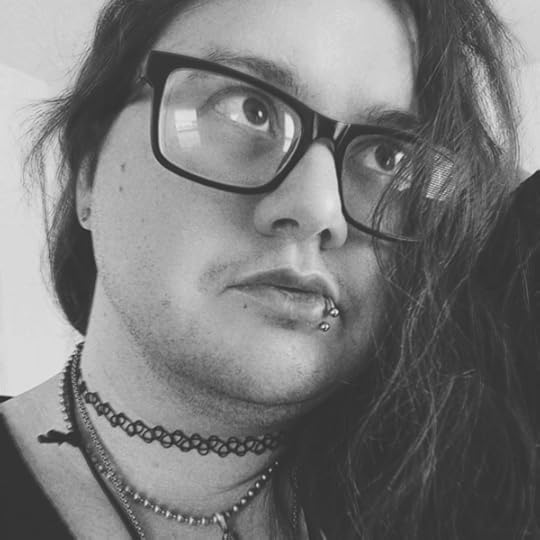
Shane (they/them) is a disabled nonbinary author of dark queer fiction. They have been writing since they were seven years old, and they haven’t stopped since. They live in Ohio with their two cats.
They took part in the Authors for Palestine event in June 2024 and the GoFundMes of the families the event supported are linked again here in this interview. Please help if you can.
Author Links:
Instagram: @shaneblackheart
Threads: @shaneblackheart
Bluesky: @shaneblackheart.com
X/Twitter: @ShaneBlkheart
Website: shaneblackheart.com
Link for It’s Only A Little Death: little-death.carrd.co
Photo by Elaine Bernadine Castro on Pexels.com
" data-medium-file="https://i0.wp.com/cmrosens.com/wp-con..." data-large-file="https://i0.wp.com/cmrosens.com/wp-con..." tabindex="0" role="button" src="https://i0.wp.com/cmrosens.com/wp-con..." alt="hand holding a slice of watermelon with blue swimming pool water in the background" class="wp-image-12969" srcset="https://i0.wp.com/cmrosens.com/wp-con... 1024w, https://i0.wp.com/cmrosens.com/wp-con... 300w, https://i0.wp.com/cmrosens.com/wp-con... 768w, https://i0.wp.com/cmrosens.com/wp-con... 1536w, https://i0.wp.com/cmrosens.com/wp-con... 1200w, https://i0.wp.com/cmrosens.com/wp-con... 800w, https://i0.wp.com/cmrosens.com/wp-con... 600w, https://i0.wp.com/cmrosens.com/wp-con... 400w, https://i0.wp.com/cmrosens.com/wp-con... 200w, https://i0.wp.com/cmrosens.com/wp-con... 624w, https://i0.wp.com/cmrosens.com/wp-con... 1733w, https://i0.wp.com/cmrosens.com/wp-con... 1650w" sizes="(max-width: 825px) 100vw, 825px" />Photo by Elaine Bernadine Castro on Pexels.comOperation Olive Branch: https://linktr.ee/opolivebranch
GoFundMe’s Highlighted by Authors for Palestine Event: https://afp.ju.mp/#info
For the AfP event we have selected the following 3 families to help boost their fundraisers. The details below were taken from the OOB spreadsheet.
Mohammed’s fundraiser: GoFundMe
Mohammed’s Instagram: @mohammedalbaredei
Ibrahim’s fundraiser: GoFundMe
Ibrahim’s Instagram: @ibrahimwithi
Rula’s fundraiser: GoFundMe
Rula’s Instagram: @rula_mohammed
You were one of the authors involved with the Authors for Palestine event – can you tell us why you chose to get involved with this, and which of your works you put up as raffle prizes?
I just wanted to do something, but I can’t really afford to donate money and protests are out of reach for me because of my disabilities. What’s happening in Gaza is horrific, and this was the least I could do, although I’ll be doing more for sure if any other events pop up. I donated most of my current published work: Everything Is Wonderful Now and Open Wound, which are books one and two in The Requiem Series, and two short stories, What Lies Beyond and 3 AM, which are both gothic stories.
Do you find your sense of social justice and activism informs the philosophy of your writing, in terms of narrative and character arcs? If so, how?
Definitely. My biggest things are mental health awareness and bringing more visibility to trans masculine and nonbinary people. I’m really passionate about challenging harmful stigmas people often place on diagnoses I personally have, and at least in my first two books, I focus on that and how painful it can be to have to live with this stuff.
I don’t sugarcoat anything and I use blunt language because it’s important to, and the stories are based heavily on my own life. I also know how isolating and lonely it can get when you’re in really dark places or confused, so I hope some of my books can be relatable, like a friend to those who need one.
I just want to help change the narrative in any way that I can. I also include resources in the back of some of my books to encourage people to get help.
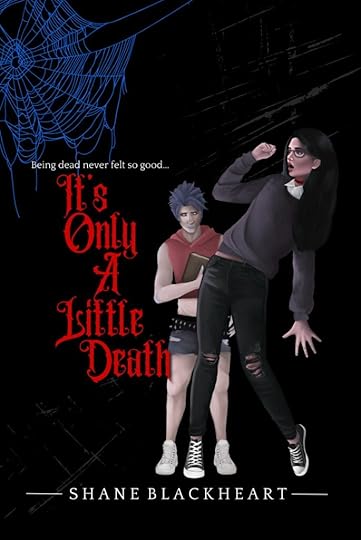
If you had to pick 3 words that sum up what your novel means to you, as the author, what would they be and why?
‘Liberating’ would be the first. Not only was it a much-needed change from writing about real-life trauma, it was just fun and validating to explore a different side of my sexual identity as a neurodivergent person, which is something I haven’t really gotten to do. ‘Nostalgic’ would be another because the vibes are close to my heart. I have a longtime love of Tim Burton films and campy, cheesy horror (including stuff like Rocky Horror Picture Show!), so this book is like comfort food to me.
It brought me a lot of happiness, and it reminded me of better times I sometimes forget. Also ‘hope,’ I think? I often worry, with my chronic illnesses and my mental health worsening over the years, that I’m slowly losing the ability to write fun stories, or to just be purely imaginative with my work, because of brain fog and just being tired a lot. This book reminded me that I haven’t lost that ability at all, which definitely gave me hope for my future as an author.
What role does memory play in your novel, and why is this an important theme?
It’s a theme I end up writing often because of my own issues with memory, rather it be forgetting things a lot or getting stuck in the past because of my mental health diagnoses, specifically the dissociative disorders I have. For the main character in the book, Silver, recovering memories, with the help of someone there for support, leads to them becoming a stronger person and being able to heal from some rough stuff.
Since they start out in the book with a fresh mind, having forgotten pretty much everything about their life, it’s a chance to view it all from a new perspective. They also have to keep a journal, so it’s very reminiscent of the kind of healing journey you’d go through while dealing with grief, trauma, or anything like that. Although it’s not good to focus too much on the bad memories, they’re really important because that’s how we grow and learn or do better. So, besides the fun and spicy parts of the story, it’s really a lot to do with learning from past mistakes, healing, and moving on from them.
What about campy b-movies & early Tim Burton led you to choose these vibes as the vehicle for your story and themes?
They were both my escape from reality for as long as I can remember, and they were a huge part of who I was growing up. Even recently, I re-watched the first Beetlejuice movie, which influenced the underworld in the book a lot, and I could watch it a hundred more times and not get sick of it. There’s just something about spending time in these morbid, weird worlds that feels like home to me, so I wanted to write something like it myself. My writing style is also kind of weird, as am I, so those vibes just fit.
Which part of the writing process did you most enjoy?
I always love writing the first draft, but especially for this one. This story just flowed from the minute I started it, and since I don’t do a lot of planning before writing, this was such a fun journey to go on and discover. There was just a constant stream of inspiration, and I finished writing this in a little over a week. I wrote for hours every day, which did not do my back or neck any favors, but I was just so excited about this one.
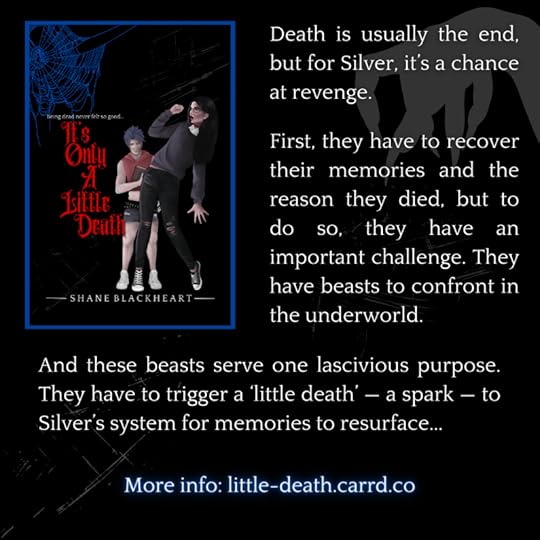
What made you want to merge sexual awakening with memory loss and memory construction? How does this interplay work in the book (if you can share without spoilers) and at what point in the writing/drafting process did this become a strong plot point for your book?
To get a bit personal, my relationship with sex and having a sexual identity of any kind is really complicated due to past trauma. Over the years, I’ve struggled with my own sexual identity, and since certain trauma memories related to that resurfaced, and I worked through some of them in therapy, I’ve had to sort of ‘reconstruct’ a sexual identity.
The main character, Silver, also has to work through some complicated issues with their sexual identity because of their past. This is why the monsters they confront, which hold their memories, also give them a way to explore their sexuality, even if it’s scary to them at first. The two things are intertwined, they can’t do one without the other.
The biggest reason why, without spoilers, has to do with how they died, which is a memory that had the strongest influence on pretty much everything. At the start of the book, I didn’t actually plan for any of this, haha. I wanted to write a smutty monster book, but by the time I got to Silver’s first monster, which is in chapter four, I got really invested in making it something deeper and more complex.
I wanted the sexual component to have a meaning to it, rather than just existing for smut (not to say there’s anything wrong with just writing smut, I’ve written plenty of it myself just for fun!). The journey to recover their memories was already a plot point, so I just intertwined the two.
What do you hope readers will take away from your book and why?
Although It’s Only A Little Death is categorized as erotica, I hope people can appreciate it’s overall story, and not just read it for the naughty monster scenes. I often mix erotic themes with more serious and emotional ones, mostly because sex is such a complicated subject for a lot of people. As the main character is neurodivergent, I also hope it shows that ND adults deserve to be sexually liberated too, if they want to and can be. The world infantilizes us too much.
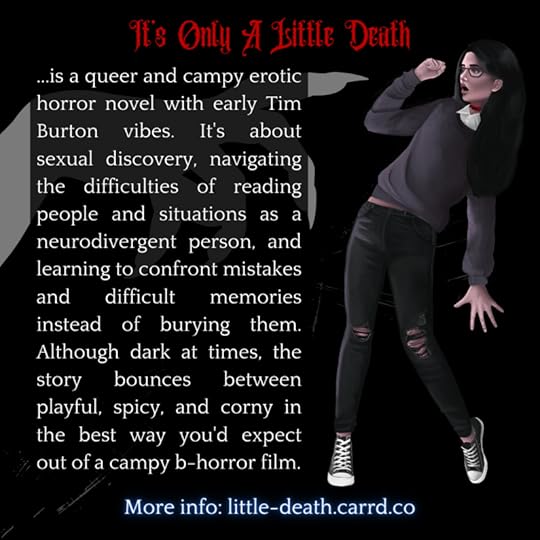 Like This? Try These:
Like This? Try These:
September 12, 2024
Author Spotlight: Terri Reid

Terri Reid is the author of the Mary O’Reilly Paranormal Mysteries. Reid uploaded her first book “Loose Ends – A Mary O’Reilly Paranormal Mystery” as an independent author in August 2010. By the end of 2013, “Loose Ends” had sold over 200,000 copies. Reid lives in northwest Illinois near Freeport, Illinois, which is the setting of the Mary O’Reilly series. A mother of seven and a grandmother of 23, she loves sharing ghost stories with her family. She writes a weekly blog called Freaky Friday through her website at www.terrireid.com. She can be reached at author@terrireid.com.
Website: terrireid.com
Facebook: terrireidauthor
Instagram: @terrireid10
X/Twitter: @terrireid10
Amazon Author Page: Terri-Reid/author/B004S8D0R0
When you began the Mary O’Reilly series with your first book release in 2010, what were your initial expectations for it in terms of planned length and reception, and has/how has that changed over the past 14 years of writing?
I have to admit that I didn’t have many (or any) expectations for the book. It had taken me years to write it and because of the market crash, I had time on my hands and was looking for some way to earn money. The Wall Street Journal had just published an article about Kindle and interviewed this new rising generation of indie authors. One of them was Karen McQuestion – who was kind enough to answer my questions about the viability of publishing through Kindle.
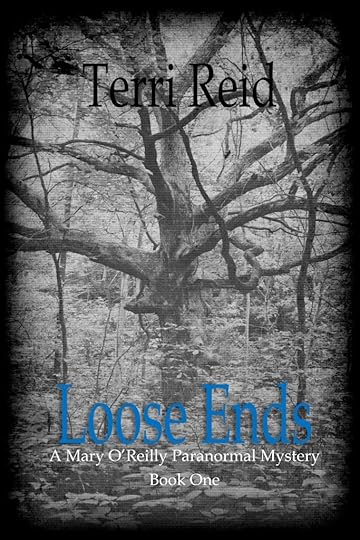
After her positive response, I uploaded Loose Ends in August and then Good Tidings in November, and they both sold more than I could imagine. From that point, I tried to upload a new book every 4-6 months. I just looked at my KDP reports and Loose Ends has sold 385,000 copies. So, how has that changed over the past 14 years? The market is so much more crowded with authors. I know that I got in at the right time because there weren’t that many choices. I have found that books can be shorter—I like to come in at about 55,000 words—because readers like to be able to devour a book in one sitting. I have also been blessed with devoted and loyal readers and a much more intimate relationship with them (thanks to social media.) And I think having that kind of relationship is important.
Where did the character of Mary come from, and what about her presented herself to you as a protagonist for your novel “Loose Ends”?
My sister, Mary, and her (now ex) husband used to buy houses in Ohio and flip them. I have to say – Ohio is a spooky state. She had worked all day, came home and took care of the kids, put them to bed, and then scrapped an old parquet floor on her hands and knees until about 2 a.m. Her husband was out of town for work. She dragged herself to bed, and when she was almost asleep, she felt like someone was watching her. She rolled over in bed to see the ghost of a Civil War soldier standing next to her bed, his head in his hands (not attached to his neck) and bullet holes seeping blood throughout his torso. My sister looked at him and said, “No! I am too tired for this crap tonight. You need to leave now.” And it did. She is my inspiration for Mary O’Reilly.
What is the spookiest thing that has happened to you in real life (if you’re happy to share that!) and did that, or a version of it, make it into the series?
I was up late – like 4:30 a.m. – writing up in my attic office. My dog, Riley (a Bernese Mountain Dog), was sleeping on a couch in my office, keeping me company. As I was typing, I happened to see him raise his giant head and look towards the attic stairs, his fluffy tail wagging a welcome. I was in the middle of a thought I didn’t want to lose, and I figured it was my husband coming up to check on me, so I kept typing. Then, out of the corner of my eye, I saw this GIANT man standing on the attic stairs. He was dressed in overalls and a flannel shirt, and my quick impression was that he was the size of a linebacker. When I turned to look, he was gone. I tried to talk myself out of the fact that I had just seen a ghost when I remembered Riley saw him first. Later, when I was chatting with a descendant of the people who built our 150-year-old farmhouse and was beginning to tell him about my encounter, he stopped me before I could describe the ghost and instead described him to me. He described him perfectly. It was his grandfather – the man who had built the house.
Other than your MC, which character do readers love in the first novel “Loose Ends”?
My readers love Bradley – Mary’s love interest. So much so that I just released a book retelling Loose Ends from Bradley’s point of view. It’s called Divergent Paths. They also love Rosie and Stanley – a couple of senior citizens who are just a hoot.
Where did you get the idea for the “Loose Ends” plot, and can you tell us a bit about your process in drafting that initial idea into a full mystery?
Well, as I mentioned earlier, from my sister’s experience, but I also wanted to write about a character who was real. Someone who was teased by older brothers but loved by them, too. Someone who had insecurities but also believed in herself. Someone who came from a loving family who supported her. Someone who doesn’t go down into the basement when she hears a weird noise because she’s watched those movies, too. And, I have always loved ghost stories – from the time I was little, we shared ghost stories. So, it’s a legacy thing for me – sharing my ghost stories with my readers.
What’s next for Mary O’Reilly?
I’m not sure. She has over 23 books about her, a bunch of short stories, and now the new Bradley book. My readers love to visit with those characters. Many of my readers re-read the series every year so they can visit with them again. (That just fills my heart with joy when I hear that.) I’m sure that there is another book or two – perhaps Ian’s point of view or Mike’s story. I’m not sure yet – I’m still pondering on that.
Like This? Try These:September 4, 2024
Author Spotlight: Vivian M. Valentine
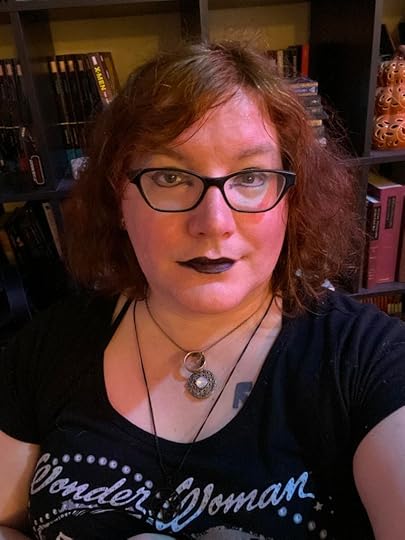
Vivian Moira Valentine is a rad trans lady who loves monsters. When she was a child, she found the Crestwood House Monster Series at her local library and it’s all been downhill from there. Now everything she likes is horrible. When not writing, Vivi enjoys card and board games and plotting out more tabletop RPG campaigns than she will ever have time to run. Vivi lives in Virginia Beach with her amazing wife Frankie and their son, as well as an ever-growing collection of action figures. She is the author of The Amelia Temple Series, and her short fiction has appeared in a number of publications.
Book Links: mybook.to/AmeliaTemple
BlueSky: @itsviviactually.bsky.social
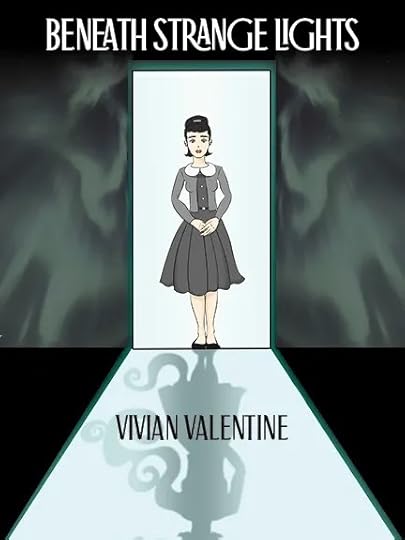
What made you choose the 1950s as the setting for the Amelia Temple series, and how does the setting work with the development of the characters and their identities?
I chose the 1950s for three reasons, two thematic and one practical. On the thematical level, there’s this cartoon version of the 1950s in the US that has captured imaginations for generations. America was Strong, the Family was Strong, and Those People Knew Their Place, Darnit. As the sort of person who wouldn’t be allowed to exist back then, I find deconstructing that cartoon to be irresistible.
The 1950s were a time of prosperity for some people, but even that prosperity was a thin wallpaper over rotten drywall. For the rest, it was a time of repression, oppression and suppression. The decade also serves as the next generation after the pulps. It’s fun to assume something like the stories of Lovecraft and others happened in the ‘20s and ‘30s, and then ask, what happened next? What did those weird fiction protagonists do as they got older, what did their children and mentees do?
Practically, the 1950s also serve as one of the last times Amelia Temple can plausibly emerge into society with a handful of forged identifying documents and no real formal education to speak of. If the series took place a generation later, the fact that she doesn’t legally exist would become a lot harder to handwave.
How do you see your work interacting with weird fiction from that period, and what drew you to incorporate these mythos elements?
I’m definitely in conversation with the pulp writers, although from my end a lot of that conversation can be summed up as, “You guys had some messed-up ideas.” I want to focus my attention on the sort of people Lovecraft et al would have considered to be monsters. Horror frequently deals in the fear of the outsider, the other. Queer horror more often explores the fear of being the other. On the one hand, that means Black people, queer people, political radicals, etc. On the other, it means asking, “What if Wilbur Whateley was a trans woman?” I like to think that my existence as a trans woman is proof that Lovecraft was right in the wrong way. What happens when we reject the shackles of propriety? We dance to race music, we reject the gender binary, we drink and we cuss and we shout and revel and enjoy ourselves, and it’s awesome.
I like swimming in the pool of cosmic horror, although in my case that means looking at the uncaring vastness of the universe and feeling awe instead of terror at my insignificance. However, I didn’t want to shackle myself to Lovecraft’s Yog-Sothery. If you look at his own work, the Mythos doesn’t really hang together in clear taxonomies; I don’t think he cared too much about fitting everything into neat little categories for a Monster Manual. Later writers have gone and made things more defined, and I didn’t want to restrict myself or explain why My Shoggoths Are Different. I like to think that I’ve taken the spirit of the Mythos in formulating a messy cosmos of my own. Nothing is clearly defined; while people within the texts have tried to impose some order onto it, it’s deliberately incomplete and contradictory. No one has the full picture, not even Amelia herself.
As you’ve plotted the other books in the series, have any characters surprised you in terms of their development and arcs?
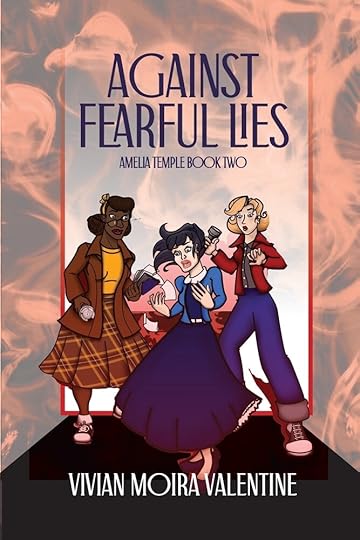
It took me a while to get a handle on Lucille Sweeney! In the original novella that became Beneath Strange Lights, she was just the girlfriend. It wasn’t until about halfway through Against Fearful Lies that I understood she had the heart of a pulp adventurer. It makes plotting a lot easier; left to her own devices, Amelia doesn’t really want to be a protagonist, but she’ll follow Luci into all sorts of trouble.
What were your strongest influences for the series in general, and the latest book in particular?
The Amelia Temple Series owes a lot to Ruthanna Emrys. Her Innsmouth Legacy books got me thinking about Lovecraft’s work in a way that quickly created Amelia Temple.
Amelia may be the most human of the various eldritch horrors readers encounter, but all of my gods and aliens and demons are fairly comprehensible. The Watchers Above are just colonizers, albeit even better at it than white people! Another really big influence is Grant Morrison’s late-Nineties comic series The Invisibles. Mostly because it informs how I approach the conspiracy of mad science wizards who are behind everything.
Conspiracy theory is uncomfortable to play with once you realize most of them are just thinly disguised antisemitism. The Invisibles solves that by centering its conspiracy around members of the Establishment – specifically, a British intelligence officer with ties to the Royal Family and a senior US military officer. I’ve tried to follow that lead with the Apollonian Society for Illumination and its offshoots. There’s no secret group running things behind the scenes; it’s the same government officials and rich corporatists you thought were in charge, and they’re up to even worse things than you imagined.
How do you approach queerness and queer identity in your work, and what informs this approach?
My view on queerness is that the whole point is to get away from boxes and prescriptive labels. With regard to sex, gender, sexual orientation and all of that, I think we’re all fumbling in the dark trying to describe the elephant. A label is useful if it’s something you picked out that makes sense to you; it’s not something to be imposed on another person. Because of the time period, it’s difficult to have the characters talk about this openly. Not only is it forbidden, a lot of the language we take for granted hasn’t yet been developed or widely disseminated.
I try to approach these as needless restrictions for the characters to navigate – there’s a point early in Book Three where Amelia laments that her new friends can’t just talk to her about their queerness. At the same time, it doesn’t prevent the characters from finding one another, just as it didn’t prevent our elders who lived through those times. Queerness is, ultimately, liberating … in exactly the way that would make Lovecraft turn in his grave.
If you had to pick 3 things you want readers to take away from your work, what would they be?
1. Evil isn’t a force or an identity or an energy. It’s nothing more and nothing less than treating other people as things.
2. Being an outsider is frightening, but it’s also liberating.
3. Girls kissing makes everything better.
Shop NowAugust 30, 2024
New Release! The Snow Child by C.M. Rosens
The freak June blizzard shrouded the scarecrow in white mist, but Jem Gregson wasn’t trudging out of the farmhouse with his rifle on Old Rusty’s account. He was out here for the snowmen.
They were in a row, slender columns of tightly packed, brilliant crystals, glittering until his eyes ached. Each had a perfectly round ball placed on top of its tapered trunk. They had just appeared through the curtains of flakes before there was even enough snow on the ground to have made them. The spherical heads were blank, without coal eyes or carrot noses, no studded black smile to mark out the face. Each one was exactly the same, and he huddled by Old Rusty and counted five – no, six – of them altogether.
Jem didn’t like this one bit.
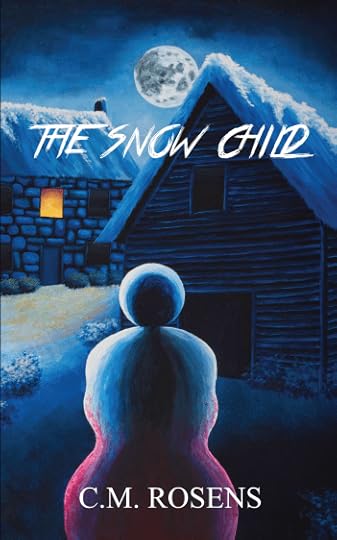 Artist : Moriah Gallagher, canvas
Artist : Moriah Gallagher, canvasBuy now from all eBook retailers: https://books2read.com/u/4AoDGk
Buy direct from my shop: https://cmrosens.com/product/the-snow-child/
Get it for free as a Ko-Fi Member: https://ko-fi.com/s/82f6f3be47
A sleepy English village mourns its war dead, but from their grieving wishes comes something new… A freak blizzard in June brings with it strange, Otherworldly children, who appear to the grieving villagers wearing the faces of those they have lost. What do they want? And what will happen if the villagers follow their Snow Child?
August 28, 2024
Author Spotlight: Vesper Doom
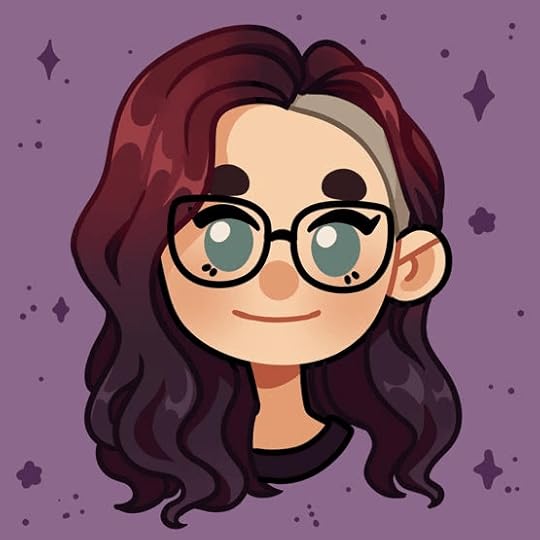 Author Avatar art by Libra Summers
Author Avatar art by Libra SummersVesper Doom (she/they) is a disabled, queer author from the greater Washington, D.C. area. When she isn’t writing horror-tinged SFF, she enjoys painting, reading, and playing video games with her husband and two cats.
Author Links:
Instagram: @vesperdoom
X/Twitter: @vesperdoom
Website: vesperdoom.carrd.co
What inspired The Binding of Bloom Mountain when you first wrote it, and what inspired the amendments in your second edition?
The initial inspiration for BOBM was moving from an urban area to a rural one during the pandemic. There is a large tree off the side of a mountain south of the town we live near and made me wonder if the tree was part of any local folk lore. That, combined with the general atmosphere of Appalachia, made me come up with a ritual to bind the magic of a mountain. The second–definitive–edition of BOBM will primarily be in smoothing over the prose and clearing up issues with the pace and flow of the novel. I didn’t have an editor the first time around, so it is also getting a professional edit.
What is it about the Shenandoah Valley that lends itself as a setting to a cozy horror/fantasy novel?
The whole atmosphere of Shenandoah leads itself to fantasy, in my opinion. The Blue Ridge Mountains are the oldest mountains in North America and you can really feel that age when you are driving through them. In the fall through spring, there is often mist that hugs the dips in the landscape and storms cling to the mountain tops. There are as more byways than main roads throughout Shenandoah and I’ve always enjoyed driving along them and letting my imagination go wild. I grew up coming here to see family, and then again with my husband when we started dating. It’s a special place to me and because it is on the Appalachian Trail and has the largest east coast National Park. I wanted to create an idealized version of this place, with the vibes I’ve absorbed in my time here.
Can you tell us a bit about the concept of ‘binding’ magic, and how this plays into the idea of balance and community within the novel and the magic system of your world?
The “binding” is a yearly ritual that one person, The Binder, completes. But the people of Milton all have side rituals that they complete: prayers, offerings, sacrifices, to help The Binder complete the ritual. It brings the community together to keep themselves safe, and then once the Binding is complete, there is a big party! The whole of the Valley turns up in Milton to celebrate the Binding of Bloom Mountain, because even though the mountain and Milton are small parts of a larger whole, they are connected to the rest through complicated magics and histories. The story itself is also about finding a community and doing what you can for that community, even if you do not really realize you are doing it.
Do you see parallels with queerness and magic, and does this / how does this get explored in the novel?
In BOBM, Celeste comes to terms with herself through the ordeal that is losing her job, stepping way out of her comfort zone, and completing the ritual itself. It’s very much a story of accepting yourself and your place in the world, which I think is relevant to queer and neurodivergent people. Especially those who came out or were diagnosed later in life (like myself).
What came first in terms of the plotting, was it the romance or the horror elements, or were they conceived together?
The horror plot came first. It started with the Old Oak Tree and the Hangman that is bound to it, then the rest of the ritual steps. Somewhere along the way Celeste met Marta and told me that she wanted to be with Marta. I dont think I did the romance justice in the original story, so that is something I am expanding upon a little bit in the Definitive Edition. The epilogue will provide a nice look at the future for my girls.
Share your favourite quote from The Binding of Bloom Mountain and let us know why you loved it / loved writing it.
My favorite quote is this one, from the revised version: She followed the road through the foothills and then up into the mountains, until Celeste breached the Appalachians and was consumed by them. I love the area I live in and I’m very affected by natural beauty, so I wanted to try and capture that in BOBM. And I really feel like that quote does encompass what it feels like to drive into the Blue Ridge and Appalachians. The scenery consumes you and it feels like there is nowhere else in the world.
Like This? Try These:Akhtab, Josiah – fantasy, adventure, dystopia, vampire fictionAmenn, Alex – queer fantasy noir for adultsBlackheart, Shane – queer adult horror, fantasy, erotic fantasyClarke, Freddie A. – queernorm cyberpunk Haber, Elad – July 2024 – horror, SFF, short fictionKallinger, H. S. – queer fiction, vampire fictionKhan, Shar – queer fantasyNoble, E.A. – queer SFF with Black and plus size leadsReid, Terri – paranormal mystery, detective fictionValentine, Vivian M. – cosmic horror, queer SFFWeaver, Nat – modern noir detective fiction with queer (bi) female leadWolverton, Nicole M. – YA HorrorAugust 23, 2024
#100HorrorMoviesIn92Days – Films 1-30
It’s that time of year again! And while I’m posting interviews from indie authors of all genres, I’m also watching some cool films that I thought I’d share with you all. If you’re new to the 100 Horror Movies in 92 Days challenge, it was started by Sarah Stubbs, a Letterboxd patron, and the rules are simple: aim to watch 100 new-to-you horror films between 1st Aug and 31st Oct. They must be listed on Letterboxd or IMDB as “horror” to count for the challenge.
This is 2022’s list (one film is missing from Letterboxd): 100-horror-movies-in-92-days-2022/
This is 2023’s list: 100-horror-movies-in-92-days-2023/
This year I’ve decided life is too short to watch films that don’t do anything for me, so I’m DNF’ing some and not counting them towards the challenge. Click the button to go to this year’s list!
2024 Letterboxd ListFilms 1-10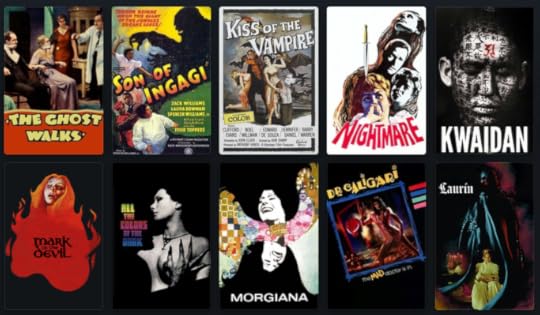
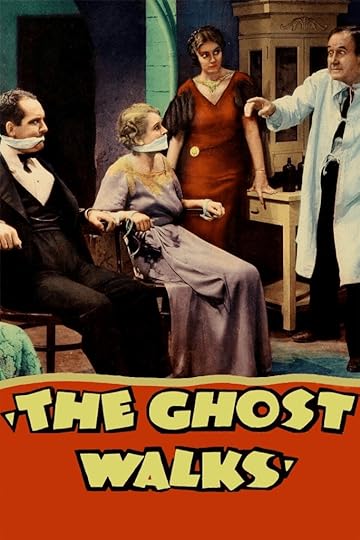
The Ghost Walks (1934) dir. Frank R. Strayer is the oldest film I’ve watched so far. It’s a fun, comedic kind of horror/thriller with no actual ghost, but there is an awful man who is the actual worst, trying it on with the unwilling heroine.
A ghostly and deadly dinner party, which at first turns out to be an elaborate staging of a new play for the benefit of a Broadway producer, becomes a true mystery when the players start to go missing.
Watch on YouTube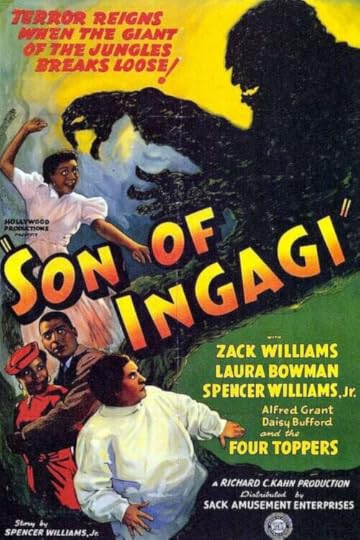
Son of Ingagi (1940) dir. Richard C. Kahn is a piece of cinematic history; the first Hollywood horror film with an all-Black cast and a Black screenwriter. It is billed as the sequel of the racist Ingagi (1930) dir. William Campbell, which is set in Africa (and shot there). The premise is an African woman had sex with a gorilla to produce a gorilla-man, Ingagi. In this film, Son of Ingagi, there is a gorilla-man living in the basement of a doctor’s house, and he goes on a rampage once she’s used him For Science. It’s not related to the original 1930 film except the title, which was to attract audiences.
Terror reigns when the giant of the jungle breaks loose! A newlywed couple is visited by a strange old woman who harbors a secret about the young girl’s father.
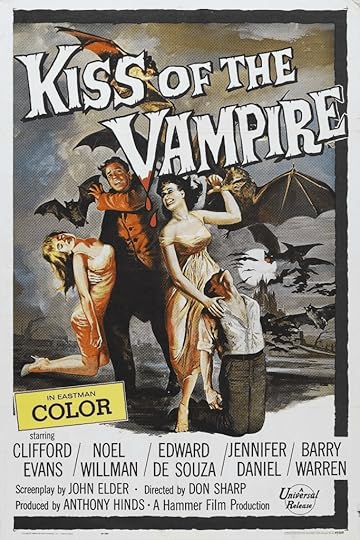
Kiss of the Vampire (1963) dir. Don Sharp is one Hammer Horror I thought I had already seen, but it turns out I hadn’t. It’s set in the same house with the twisty pillars and opulent Gothic decor, and has everything you can expect from a Hammer Horror. I found the whole thing on YouTube and really enjoyed it, even if it cuts off the very end a bit abruptly.
Shocking! – Horrifying! – Macabre! Honeymooning in Bavaria, a young couple becomes stranded and is forced to stay the night in the area. Doctor Ravna, owner of the impressive chateau that sits imposingly above the village, invites them to dinner that evening. Their association with Ravna and his charming, beautiful family is to prove disastrous.
Watch on YouTube!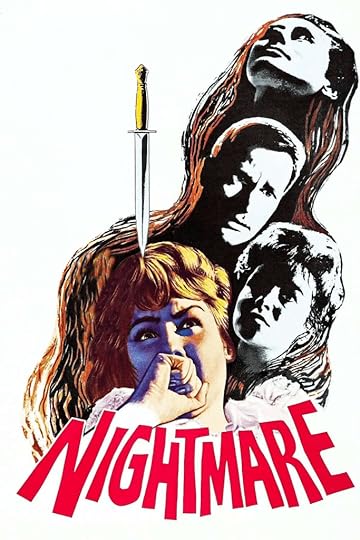
Nightmare (1964) dir. Freddie Francis is another Hammer I haven’t seen before. This one is psychological horror in the vein of Gaslight, with family drama and terrible men. Again. I’m going in cold on all of these and yet there are terrible men everywhere. In this case, it’s also terrible women, though, so this balances it out. It’s tragic and vicious and I was pretty happy about the ending.
A young student is haunted by recurring dreams of her mother murdering her father, but her nightmare is just beginning as she tries to prove to her loved ones that she is not insane.
Watch on YouTube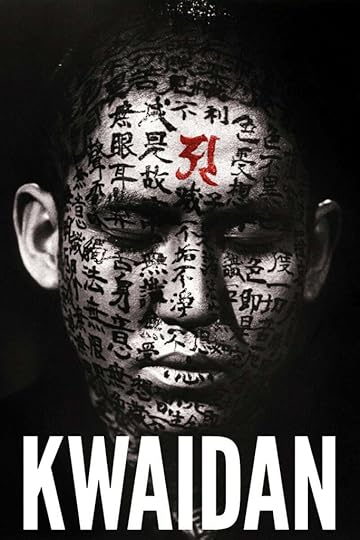
怪談 / Kwaidan (1964) dir. Masaki Kobayashi, is another one I can’t believe I haven’t seen before. I was sure I had, but nope. It’s so gorgeous, with 4 Japanese folktales reimagined for the screen. I think my favourite was the Snow Maiden, with the eyes in the sky and the magical feel of the winter world. Oh, and terrible men.
Taking its title from an archaic Japanese word meaning “ghost story,” this anthology adapts four folk tales. A penniless samurai marries for money with tragic results. A man stranded in a blizzard is saved by Yuki the Snow Maiden, but his rescue comes at a cost. Blind musician Hoichi is forced to perform for an audience of ghosts. An author relates the story of a samurai who sees another warrior’s reflection in his teacup.
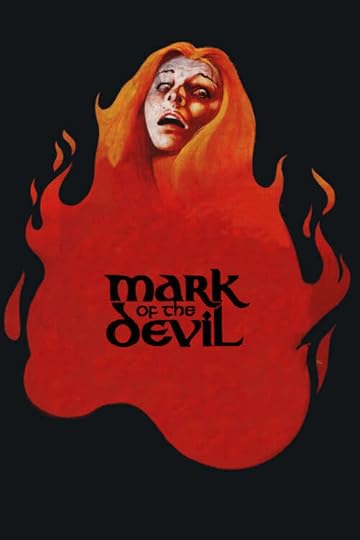
Hexen bis aufs Blut gequält / Mark of the Devil (1970) dir. Michael Armstrong, Adrian Hoven was my first “witch trials” horror of the challenge, and this critiques the secular powers as well as the Church, and especially looks at the abuses of the gentry and local elite during this time for their own socio-political and economic gains (the accusations against the young male heir to a lot of lands, for example). It’s also a tragic love story, where the materialist views of the main female protagonist are also subtly critiqued; she is not rewarded by the outcome of the film, and in fact is the architect of her own tragedy by stirring up violent protest against the powers-that-be. Make of that what you will. I think this is a really good one to watch alongside Czech New Wave film, Kladivo na čarodějnice/Witchhammer (1970) dir. Otakar Vávra, and The Witchfinder General (1968) dir. Michael Reeves.
In 1700s Austria, a witch-hunter’s apprentice has doubts about the righteousness of witch-hunting when he witnesses the brutality, the injustice, the falsehood, the torture and the arbitrary killing that go with the job.
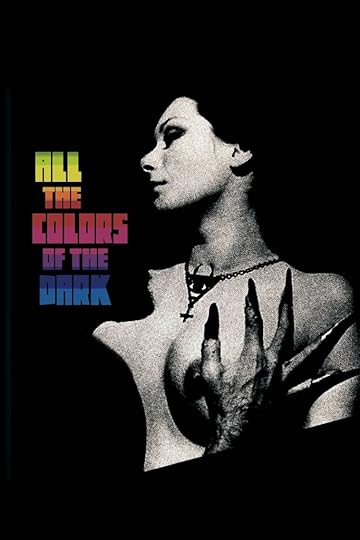
Tutti i colori del buio / All the Colours of the Dark (1972) dir. Sergio Martino is the first giallo of the challenge. I think I picked a good one. It’s psychological, the usual sex and death and pregnancy/miscarriage drama that drives women to hysteria, and a breathtakingly gorgeous woman inexplicably with an awful man who doesn’t deserve her. Tale as old as time, really. I was fully expecting something sapphic with the neighbour.
After a car accident that caused the loss of her baby, Jane experiences an increasing amount of nightmares that shake her to her core. After seeking professional help, her haunting visions turn into an even more frightening reality, one full of black magic, blood orgies, and murder.
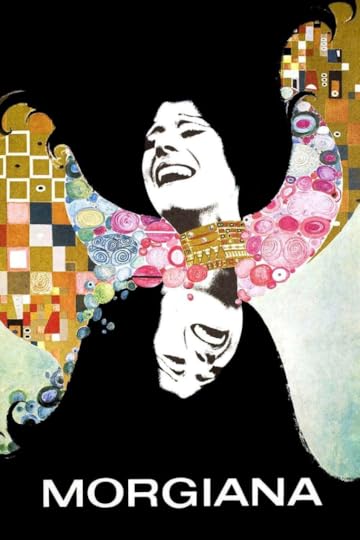
Morgiana (1972) dir. Juraj Herz was my first Czech New Wave film of the challenge. This was a really fun Gothic Horror, with close focus on a sister relationship that has distinctly Cinderella/Snow White vibes. Morgiana is the name of the evil sister’s cat, and I’m sure the cat is somehow symbolic of the sister’s psyche or something, but she’s also a really pretty cat. Not to ruin the film, but the cat’s fine.
Jealous of her vapidly “good” sister’s popularity, poisonous Viktoria doses pretty Klara’s tea with a slow-acting fatal substance. As the latter grows hysterically weak, the former finds success increasingly compromised by guilt, blackmail, and the pesky need to kill others lest she be exposed.
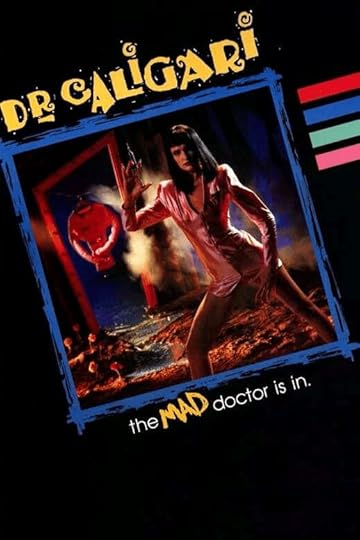
Dr Caligari (1989) dir. Stephen Sayadian was a fun glimpse into the buttoned-up and deeply repressed USian psyche where it comes to the female orgasm, but if Richard O’Brien has already done it, it’s fine to leave it alone. It’s a more stylistic (if possible) USian version of Shock Treatment (1981) dir. Jim Sharman, with the medical horror amped up to 11 and men getting sex-mad women’s brain juices implanted in their craniums. Horny, incest-y, and also came off as pretty transphobic and annoyingly hetero, which Shock Treatment managed to avoid while still getting the incest in. Also, Shock Treatment has catchy songs, and Pat Quinn is back in the incest sibling role.
The MAD doctor is in. Mrs. Van Houten has shown signs of losing touch with reality, and her husband discusses possible treatment with Dr. Caligari, who says Mrs. Van Houten has a disease of the libido.
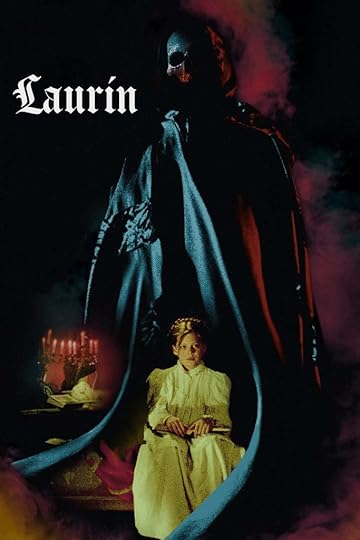
Laurin (1989) dir. Robert Sigl is a gentle German Gothic drama about a young girl who is becoming a teenager while her entire life falls apart. No magical periods here, she’s a bit too young for that, but she is struggling with the death of her pregnant mother, her father’s absence at sea, and her grandmother’s deteriorating health while her classmates go missing. It’s more magical realism with a pitch-dark core than straight horror, so don’t go in expecting a slasher or a supernatural tale.
In a small port town at the end of the 19th century children are disappearing. A mysterious man in black who stalks the town may be Death itself. And nine-year-old Laurin is suffering terrifying dreams and hallucinations of a man carrying a sack and frightened children calling for help from behind closed windows.
Watch on YouTube: in English with Croatian subtitlesAs we get into the 1990s up to present day, I aimed to watch fewer Hollywood and big Anglophone studio-made films, but also fewer things made in the US in general. Even in the UK, US-made stuff seems to dominate the streaming platforms, and I want to watch more films from elsewhere. More British and Irish horror, even.
That’s not to say no US-made films. I’m just being a bit more conscious in branching out.
As of now, I have no 1990s films in my list! So we jump straight ahead to the 2000s.
Films 11-30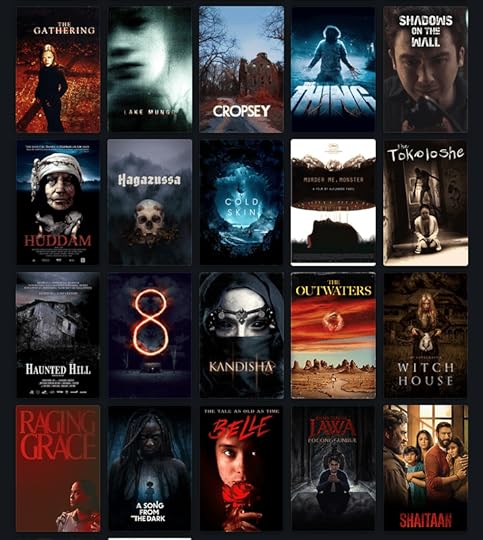 The Gathering (2002) dir. Brian Gilbert – a Christina Ricci and Ioan Gruffudd film I hadn’t seen. I liked the concept of this but the theology was weird and the whitewashing of the crucifixion scene frankly bizarre, but there we go, that’s what you get for watching a religious-themed horror from the 00s. The ableism and lazy mental health motive of “hurt people hurt people” is also a reason I won’t be re-watching this one.
The Gathering (2002) dir. Brian Gilbert – a Christina Ricci and Ioan Gruffudd film I hadn’t seen. I liked the concept of this but the theology was weird and the whitewashing of the crucifixion scene frankly bizarre, but there we go, that’s what you get for watching a religious-themed horror from the 00s. The ableism and lazy mental health motive of “hurt people hurt people” is also a reason I won’t be re-watching this one.Cassie Grant (Christina Ricci) is a young girl from the United States who is wandering through England on foot. On her way to Ashby Wake Cassie is hit by a car. The driver of the car, Mrs Marion Kirkman (Kerry Fox), immediately calls an ambulance. During an examination at the local hospital the doctor comes to the conclusion that Cassie only has some scratches and not even a concussion, but Cassie has lost her memory due to the accident. She only knows her name and mother country, but she does not know which town she comes from, who her family is and why she is in England.
Lake Mungo (2008) dir. Joel Anderson was a much better pick, and my first Australian horror of the challenge. I loved how Weird this was. I went in cold and didn’t expect it to be a documentary-style mixed with ‘footage’. I really enjoyed it, and I can see what people mean about it getting under your skin. The build-up was really well done for me. And again – family drama and men being terrible.After 16-year-old Alice Palmer drowns in a local dam, her family experiences a series of strange, inexplicable events centered in and around their home. Unsettled, the Palmers seek the help of psychic and parapsychologist, who discovers that Alice led a secret, double life. At Lake Mungo, Alice’s secret past emerges.
Cropsey (2009) dir. Joshua Zeman and Barbara Brancaccio is an actual documentary, but worked fairly well paired with Lake Mungo. Fact is also pretty scary, and I liked how the documentary wove the serial killer story with a common urban legend.Realizing the urban legend of their youth has actually come true, two filmmakers delve into the mystery surrounding five missing children and the real-life boogeyman linked to their disappearances.
The Thing (2011) dir. Matthijs van Heijningen Jr. is the prequel to The Thing (1982) dir. John Carpenter, but nothing will ever beat Mason Hawthorne’s classic, Am I The Thing That Pounded Me In The Ass In Antarctica. This masterpiece of m/m erotica is not a movie yet, but it would probably be better than this prequel. That said, I didn’t hate the prequel, I actually kind of liked it. The body horror is more gloopy and sticky and visceral, the effects not amazing, but it was fine. Also, was that Thormund from GoT????When paleontologist Kate Lloyd travels to an isolated outpost in Antarctica for the expedition of a lifetime, she joins an international team that unearths a remarkable discovery. Their elation quickly turns to fear as they realize that their experiment has freed a mysterious being from its frozen prison. Paranoia spreads like an epidemic as a creature that can mimic anything it touches will pit human against human as it tries to survive and flourish in this spine-tingling thriller.
Shadows on the Wall (2014) dir. Benjamin Carland was my first Sci-Fi/Cosmic Horror of the challenge, and not a great one to start with. Largely forgettable, but a good one to watch alongside The Resonator and other Miskatonic U films. You can find a list of these here, and I’m always adding to it so feel free to recommend things. The blurb for the movie is also a bit odd; it mentions that the protag has “personality disorders” but he’s clearly autistic-coded. Make of that what you will.A modern day sci-fi about Palmer Marshall, a struggling engineering student that’s flailing through his personal life, classes, and career. Palmer is on the cusp of a potentially huge discovery and he devotes every waking moment to the challenging, and often fruitless, pursuit of creating something that might change the world. But Palmer soon learns that the road to success is long and fraught with failure. Despite crippling anxiety and personality disorders, Palmer perseveres and creates the one – the dream machine that he’ll be remembered for.
Hüddam (2015) dir. Utku Uçar is the first in the franchise, and very low budget and not great in terms of acting. My tolerance is higher for Turkish films than English-language films, mainly because even though it’s not great, there’s usually enough drama to keep me entertained. I think the D@bbe films did the haunted village and possessed family member thing better.Can and his mother Derya live an ordinary country life. But after a while his mother starts to exhibit strange behavior. Intrigued by Derya’s enigmatic behavior Can begins to wonder about his mother’s childhood.
Hagazussa (2017) dir. Lukas Feigelfeld for me did a better job of exploring a woman’s journey through the horrors of her rural society and social ostracism into embodying the figure of the witch (the hagazussa of the title) than Eggers’ New England dark fable did. It could work with The VVitch (2015) dir. Robert Eggers as a double bill, but it would also work alongside Gwen (2018) dir. William McGregor. I think it would also work with Sator (2019) dir. Jordan Graham thematically. It’s really all about how much despair you can tolerate in one sitting, I guess. Most of the films in my Folk Horror list would be good with it, in fact.In the 15th century, a young goatherd living alone in a mountain hut feels a dark presence in the woods.
Cold Skin (2017) dir. Xavier Gens is if The Shape of Water was gender-flipped and about an abusive relationship in the context of genocidal mania and the onset of World War I. The futility of the battles between the lighthouse keeper and the fishmen are the strangest WWI allegory I’ve ever seen, and the whole thing – uneasy alliances, resistance, collaboration – was all really unsettling and an interesting watch.A young man who arrives at a remote island finds himself trapped in a battle for his life.
Muere, Monstruo, Muere/Murder Me, Monster (2018) dir. Alejandro Fadel was … not for me. But it was a weird monster thing that should have been for me. But it wasn’t. I don’t know what to tell you. I really liked the shots of the Andes.A rural police officer investigates the bizarre case of a headless woman’s body. The prime suspect blames the crime on the appearance of a legendary monster.
The Tokoloshe (2018) dir. Jordan Pikwane was much more for me. I really liked the social injustice angle interwoven with Busi’s supernatural issues, but I kind of wish the ending had been a bit more dramatic and emotional. This one has strong warnings for CSA and attempted rape of an adult.Busi, a young destitute woman with dangerously repressed emotions, lands a job as a cleaner at a rundown hospital in the heart of Johannesburg. Desperate for the money so she can bring her younger sister to Johannesburg, she must cope despite the predatory and corrupt hospital manager. When Busi discovers an abandoned young girl in the hospital, who believes she is tormented by a supernatural force, Busi must face her own demons from her past in order to save the child from the abusive monster that pursues them both relentlessly.
Cin Tepesi/Haunted Hill (2018) dir. Furkan Düzen, Fatih Hasanoglu – found footage documentary horror, like Lake Mungo, but really not that great. In the same sort of league as Hüddam. The ending wasn’t very satisfactory for me, but also I’m not sure how they could have ended it. They also needed to stop summoning cin ffs.Fatih and Furkan are two young [men], investigating paranormal events for social media. They went to a region called as “Haunted Hill” by the public in a small Turkish village. They’ve obtained real gin images there. But their cameras weren’t good enough. So they decided to get help from a professional team and go back to the “Haunted Hill”.
8/The Soul Collector (2019) dir. Harold Hölscher is a South African folklore film oozing with those good, dark folk horror vibes. I really enjoyed it. I do like horror where the protagonist is a child, although in this case she wasn’t the protagonist but a main character whose perspective we don’t actually get, as we see her mostly from the perspective of the adults in her life, while she tries to navigate the loss of her parents and her precarious position as she’s adopted by her aunt and uncle. I do like the relationship she builds with the Soul Collector, and the ending was pretty good.An old man, fated to collect souls for eternity, seeks atonement after trading his daughter’s soul.
Kandisha (2020) dir. Julien Maury, Alexandre Bustillo was the worst film I’ve seen so far. I should have known better that to watch a French film that made an [Islamic] jinn its antagonist, as if 2020 wasn’t its own red flag. I’ve yet to find something good that came out of that year. This film is a gender-flipped Candyman, pretty much scene for scene, especially the ending. Even her name has ‘Candy’ in it when you say it out loud. I am not a big fan of the whole thing where the white girl saves her family while her two friends – a Black girl and a French-Moroccan girl – both suffer and have their families destroyed by Kandisha. Also, I’m not a fan of the “Arab men are violent misogynists” stereotype, which is literally the white girl’s boyfriend and the catalyst to her summoning Kandisha to kill him. There’s just a lot going on in this film that just didn’t sit right with me.One summer evening, three childhood friends invoke the spirit of Kandisha, a vengeful creature from a Moroccan legend. The game quickly turns into a nightmare when their loved ones begin to disappear.
The Outwaters (2022) dir. Robbie Banfitch was probably the worst film for me in terms of visceral scares, in that I felt sick after watching it, and now it’s burned into my brain. I had to mute and fast-forward through some of the scenes. I thought that was very effective, but it really affected me. I won’t be re-watching, that hit my body horror limit even though you don’t see very much. I thought the desert scenes were great, and the whole weird timey-wimey thing. I can’t rate this one, though. No idea where I would start. If you like fucked up found footage that’s also very slowburn and atmospheric and the body horror is mostly implied soundscape with gorey flashes of reveal, this might be for you.Deep in the Mojave desert, under a scorching blood-red sun, four travelers have set up camp to make art. One fateful night, the group is thrust into a feverish tornado of flayed flesh and mind-boggling monstrosities, the likes of which mere humans simply cannot fathom.
H. P. Lovecraft’s Witch House (2022) dir. Bobby Easley – second worst after Kandisha of the films I’ve seen so far. Acting is not great, and similar to the Turkish movies. We do get an extended sapphic soft porn scene that was a real highlight of the film, filmed for the male gaze rather than the gaze of actual sapphics, but it happens.Graduate student Alice Gilman is running from an abusive past. She seeks refuge in the infamous Hannah house; a historic home with an ominous past. Determined to prove the possibility of alternate dimensions, she unknowingly unlocks a gateway to unimaginable horror. Based on the H.P. Lovecraft’s short story The Dreams in the Witch House.
Raging Grace (2023) dir. Paris Zarcilla is one of my favourites so far. While the film is really about the mum, Joy, the title refers to Joy’s daughter Grace, who is acting out throughout the film in rebellion of the way they are forced to live, and after being manipulated and betrayed by adults she is choosing for her paternal figures. It’s a slow drama with all the trappings of Gothic Horror, not supernatural but where the horror comes from the dynamics between the characters. It explores the power imbalances between the characters and has a number of twisty reveals, one of which made my stomach drop. [There is no CSA.]An undocumented Filipina immigrant lands a job as a careworker for a seemingly terminal old man, securing a better life for her and her daughter. But a dark discovery threatens to destroy everything she’s strived for and holds dear.
A Song From The Dark (2023) dir. Ogodinife Okpue was the first film of the challenge for me, and it was a great one to start with. It’s a micro-budget supernatural British-Nigerian horror-fantasy film that does all it can with what it’s got, and goes hard on the family drama angle. Some scenes made me cry.Ashionye, a reluctant Nigerian Shaman living in the south of England, who has been hired by an old family friend, Isioma Williams, to investigate and expel a malevolent spirit that has been tormenting her family after the death of her estranged husband, Magnus. To the chagrin of her demon hunting partner, Marv Taylor, Ashionye reluctantly accepts the job as a way to repay an old debt she owes Isioma. As Ashionye digs deeper into Isioma’s family situation, she finds herself standing against a familiar force that brought about her trauma since childhood.
Fanga / Belle (2023) dir. Max Gold is now my favourite Beauty and the Beast film alongside Panna a Netvor, as long as we ignore the fact that an Icelandic farm girl is called by a French name. What I loved about it was that there is no CGI or prosthetics; the change is a psychological one, from man to beast, and he is also cursed to only eat human flesh. It’s also got a good spin on the sorceress, who is a character throughout the film not just a catalyst for the story, and her arc is tragic too. Iceland as the setting makes the whole film go from low budget to million-dollar epic, just by the landscape shots looking amazing.Belle works on the family farm and cares for her father after he falls severely ill. Desperate to save him, she journeys in search of a mythical rose believed to be a cure. She must surrender herself as a prisoner to a vicious beast as payment for the rose. Battling the beast’s spell and the two toxic relationships in her life, Belle’s true journey is only just beginning.
Kisah Tanah Jawa: Pocong Gundul (2023) dir. Awi Suryadi was a bit uneven supernatural ghost story, but I loved the main two characters and their platonic relationship. It was also my introduction to the pocong! It has some jumpscares and body horror moments, and I enjoyed it to the end. I’d watch it again I think, and I’d be up for watching another film that had the Hao and Rida in it solving supernatural mysteries.HAO has retrocognitive ability, an ability to see past events. With his ability, Hao helps SARI, a vocational school student, who was kidnapped by ‘Pocong Gundul’ – a evil pocong figure with a bald head. Together with his best friend RIDA, Hao manages to save Sari, but Hao’s actions ignites anger from the Pocong Gundul. Terror after terror threatens Hao’s life. With his ability, he travels into Pocong Gundul’s past and finds out that in his past, he was a black shaman named WALISDI. An evil man who performs a dangerous ancient ritual, a ritual that turns him into ‘Pocong Gundul’. If Hao does not do anything, Pocong Gundul will roam around and take more victims. Hao must do his best to stop Pocong Gundul’s evil plan, even though his life is at stake.
शैतान / Shaitaan (2024) dir. Vikas Bahl is a film you can relax into. It has a slow build-up of the family’s dynamics prior to meeting the antagonist, and I enjoyed getting to know them and getting a feel for them. The song is a banger, also. The actual concept is fine, and it reminded me of a few other things (not necessarily with supernatural compulsion involved, but where people are driven by others to do whatever the antag says). It went hard at times. I enjoyed it.Kabir and his family’s fun weekend retreat takes terrifying turn when an intruder takes over the control of the body of his teenage daughter, putting her at the mercy of his increasingly sinister orders.
That’s it for Films 1-30 of the challenge so far!
I hope that you have enjoyed the trip, and I’ll be back with the next batch later on, like last year.
Like This? Try These:August 21, 2024
Author Spotlight: Shariva Khan (Authors for Palestine Host)
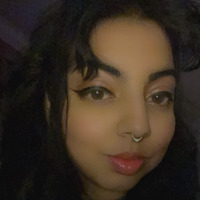
I’m a first generation queer, trans desi person (what a mouthful). I’ve been writing ever since I was a kid which usually meant putting things off and scraping by with grades. Nowadays, I spend time fostering exotic animals through several charity foundations that help save them from terribly abusive and negligent situations. When I’m not writing, I’m usually thinking about it, immersing myself in media and literature, in the psyche of other humans, and working to build foundations in worlds I hope someone can lose themselves in.
Author Links:
Instagram: @shariva.writes
Author Page: www.amazon.com/dp/B0CW1NB6NL
Photo by Elaine Bernadine Castro on Pexels.com
" data-medium-file="https://i0.wp.com/cmrosens.com/wp-con..." data-large-file="https://i0.wp.com/cmrosens.com/wp-con..." tabindex="0" role="button" src="https://i0.wp.com/cmrosens.com/wp-con..." alt="hand holding a slice of watermelon with blue swimming pool water in the background" class="wp-image-12969" srcset="https://i0.wp.com/cmrosens.com/wp-con... 1024w, https://i0.wp.com/cmrosens.com/wp-con... 300w, https://i0.wp.com/cmrosens.com/wp-con... 768w, https://i0.wp.com/cmrosens.com/wp-con... 1536w, https://i0.wp.com/cmrosens.com/wp-con... 1200w, https://i0.wp.com/cmrosens.com/wp-con... 800w, https://i0.wp.com/cmrosens.com/wp-con... 600w, https://i0.wp.com/cmrosens.com/wp-con... 400w, https://i0.wp.com/cmrosens.com/wp-con... 200w, https://i0.wp.com/cmrosens.com/wp-con... 624w, https://i0.wp.com/cmrosens.com/wp-con... 1733w, https://i0.wp.com/cmrosens.com/wp-con... 1650w" sizes="(max-width: 825px) 100vw, 825px" data-recalc-dims="1" />Photo by Elaine Bernadine Castro on Pexels.comOperation Olive Branch: https://linktr.ee/opolivebranch
GoFundMe’s Highlighted by Authors for Palestine Event: https://afp.ju.mp/#info
For the AfP event we have selected the following 3 families to help boost their fundraisers. The details below were taken from the OOB spreadsheet.
Mohammed’s fundraiser: GoFundMe
Mohammed’s Instagram: @mohammedalbaredei
Ibrahim’s fundraiser: GoFundMe
Ibrahim’s Instagram: @ibrahimwithi
Rula’s fundraiser: GoFundMe
Rula’s Instagram: @rula_mohammed
You were the host of the Authors for Palestine event – can you tell us how that came about, and which of your works you put up as raffle prizes?
Oh goodness, lol. Well, I knew that I wanted to help somehow. I’ve been a huge activist for Palestine for several years and saw the constant decline of attention when it stopped ‘trending’ online. I don’t think it’s weird to say that I’ve thought about Palestine every day since the apartheid blew up in October.
I was starting to see a lot of division with people on my feed and knew that I wanted to connect with like-minded people who were caring, compassionate activists of their own and so I constructed Authors for Palestine thinking I’d be able to get a few people. Instead, it blew up and we had an amazing turnout.
MAIDEN OF THE HOLLOW PATH was my main raffle prize. I think I gave away two or three copies of my epic grimdark fantasy which I thought was fitting for the occasion.
Do you find your sense of social justice and activism informs the philosophy of your writing, in terms of narrative and character arcs? If so, how?
I absolutely think that.
My characters are complex. they come in different colors: courageous, cowardly, extreme, passive. they all have individual beliefs and clash on several occasions. There’s not a time you’ll pick up my books and not see bits and pieces of the world we live in. You kind of see that with Shahina and Crogan.
She’s this villainized rajkumari who destroyed something sacred. Three-hundred-years worth of tradition burnt overnight. But the more you follow her story, the more you start to realize that maybe she’s not as bad as everyone thinks. Maybe she belongs to a group of people who are colonial, who’ve been pushing into land they don’t own, pillaging and colonizing and destroying what they can for themselves. Maybe that ‘tradition’ was propaganda.
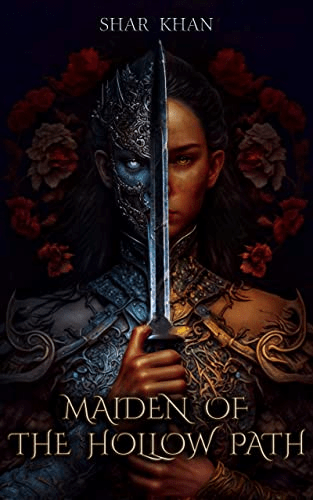
What can readers expect in terms of themes for Maiden of the Hollow Path, and why are these themes so important to you?
There are some very intense themes. Nothing graphic, of course, but something to be conscious of. Very horror-esque, but more in the sense of men rather than the monsters they hunt. You’ll find mentions of child soldiers and child marriage, incest, drug use and self-harm. Not in that order, and not directly linked to each other, but to a society that has given no out to the people they’ve promised to take care of.
Indoctrinate children young and they’ll never disobey you. Keep things in your own bloodline because no other is good enough. Self medicate because of consequences they never said you’d reap, and suffer, but only in silence. These themes are hidden away in our own society. we know they’re there, but we don’t really want to talk about it. but I do.
How did these themes influence your worldbuilding, and did you find yourself including things in your world that you didn’t expect to at the start of the plotting/writing process?
I definitely did not think I was going to incorporate drug use, mostly because I based this particular drug off runes that one can consume. very mystical and fantastical, but also dangerous.
In terms of the heavier themes that I previously mentioned, I knew they would be a huge part of the worldbuilding. It’s based off 14th century West Bengal, but of course I didn’t live through that, so based off research and my own modern inquiries when I visited my mother’s homeland, they were themes I knew I needed to have.
How is queerness treated in your world, and what representation can readers expect to find?
Despite being an epic grimdark, my world is fully queernorm. All my characters are part of the LBGTQ+ even if they don’t mention it. you can find a pansexual princess, an asexual pirate, and a demisexual kitsune shifter as part of the main cast. I also have a transgender side character that slowly comes to the forefront as the series grows.
There’s also nonbinary and genderfluidity which you can see in Shahina Rukhezzi and Crogan Takahashi who don’t really adhere to the roles of ‘woman’ or ‘man’, nor do they really see themselves in that light.
Readers can look forward to complex journeys of self-identity.
What is your favourite part of the book (if you have one) and why? If you don’t, which bits were most enjoyable to write?
I think my favorite part of the book is when Crogan starts calling Shahina out on her shit. She’s this tough warrior princess whose led armies through procession marches and has honorary titles and a thousand medals. no one’s ever really stood against her except for this impressive man who hails from across the sea, who stands his ground even if he’s a little intimidated by her.
Despite Shahina being utterly irritated and pissed off that he’s constantly against her, her respect and admiration of him grows because she’s not what everyone says she is. She’s not some dictator who’s always right and I think it’s one of the most human-based experiences I’ve ever written between two characters.
Like This? Try These:Josiah Akhtab – adventure, dystopia, fantasy
H. S. Kallinger – queer SFF
E. A. Noble – queer SFF with Black and plus size leads
Freddie A. Clarke – queer cyberpunk with Venetian history
Nicole M. Wolverton – YA Horror
August 14, 2024
Author Spotlight: Freddie A. Clarke
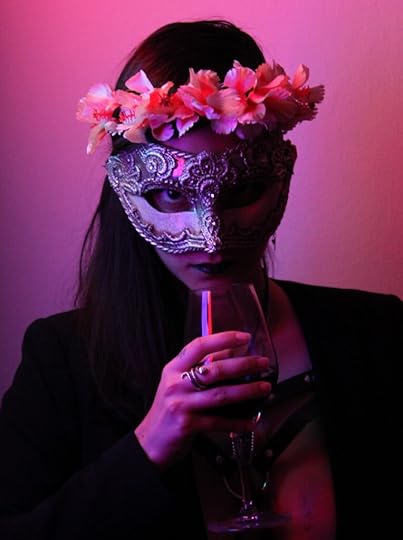
Freddie A. Clark (they/them) is the entity hiding in a thread of cables and flowers, a cyborg riding their motorcycle in the streets of a Cyberpunk metropolis, a masked alchemist traversing Venetian canals. Proud human slave of three former stray cats, Norse Pagan and hopeless nerd, Freddie is influenced by the work of William Gibson, Neal Stephenson, Pat Cadigan, Anne Rice, and Neil Gaiman among many others. Their creativity draws from ‘80s aesthetic, movies and pop culture, and from an endless pile of books, graphic novels, manga and video games.
Website: freddieaclark.com
Instagram: @freddieaclarkauthor
Goodreads: Freddie_A_Clark
Itch.io: freddie-a-clark.itch.io
Book links for Umbra: books2read.com/u/4AdRDN
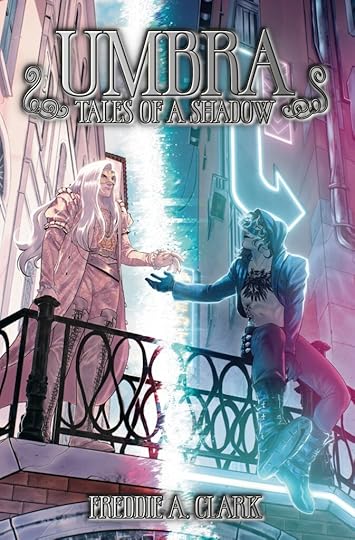
What were your main influences for Umbra: Tales of a Shadow, and how did they help to shape the book?
My main influence for Umbra: Tales of a Shadow was certainly Assassin’s Creed II, a game I always mention among its comp titles. I’m a big fan of the franchise, hence I’ve always loved the idea of writing a story about a stealthy assassin hiding in the dark corners of a breathtaking city, a silent shadow who uses his weapons and his charm to bring justice. Since Venice is one of the main locations in Assassin’s Creed II, the inspiration became even more obvious once I started drafting this story.
A fun fact I’ve never shared in the past: the idea for Umbra: Tales of a Shadow came to me exactly when, moved by nostalgia, I rewatched the first trailer from E3 2009! My love for Venice heavily influenced the world I described and it’s another inspiration worth mentioning, as well as my love for Cyberpunk literature, its detective aspects, and the concept of low-life/high-tech, like in the works of William Gibson and Richard Morgan.
What makes the themes of transformation and healing so important to you?
These themes are part of me and my personal history. My endless journey of self-discovery as a trans person made the theme of transformation particularly dear to me. My past experiences and trauma shaped the person I am; I wouldn’t be so proud of how far I’ve gone if healing hadn’t become an important personal goal. My identity affects my writing and that’s why the themes of transformation and healing are so recurrent in every story.
What elements of Venetian history did you include in the novel, and how did you adapt them for the story?
The historical facts that inspired the society of Florydia, Umbra: Tales of a Shadow’s setting, mostly come from Renaissance Venice. Figures like the Cortigiane Oneste, well-educated women who worked as sex workers and patrons of the arts, and the Lords of the Night, a mysterious judicial body of night vigilantes which was neglected by the men of power until its dissolution in XVIII century, have their counterparts in the city I created. Florydia’s government is also heavily based on the politics of the Serenissima and its several, intricate government bodies.
What made you choose cyberpunk as the genre for this story, and how does this genre create space to explore the themes?
Cyberpunk is my favourite literary genre. The idea of a Cyberpunk Venice is so rare it’s basically unheard of. Currently, Venice is a modern city with an ancient façade, a city in which modernity and tradition perfectly blend. I couldn’t help but imagine Venice in the future, with holograms, cyborgs, and neon lights. I described a counterpart of Venice as powerful as in the past, but even more modern than it is now, although still in love with its ageless and picturesque appearance. I can proudly say that the mix worked!
How do you see queerness and alchemy intersecting, and how do they work together in the novel?
Alchemy is first and foremost a philosophical system based on spiritual growth. Alchemists weren’t merely ancient scientists, but philosophers as well. The stages of the Great Work were used by the legendary scholar Hermes Trismegistus as metaphors for self-discovery: the Blackening is the death of one’s old self, the Whitening is the awakening, the Yellowing is the awareness, and the Reddening is the illumination, the final stage of transmutation.
I went through these stages myself when I started exploring my identity and finally figured out my gender. Self-discovery as a whole is a concept that alchemy and queerness share. Besides, alchemy includes the concept of Rebis, the divine androgyne, the reconnection of spirit and body represented by a being who’s both male and female. I love this idea so much that the co-protagonist of this story, the non-binary alchemist Soleluna, is compared to the Rebis on-page.
Is there anything you wanted to include in the novel (facts about history, culture, alchemy, or philosophy) that you had to leave out in the end? Can you share one of your favourite facts?
There were many facts I would’ve loved to include in Umbra: Tales of a Shadow, but my favourite is the mask named Gnaga. This cat-shaped mask is tied to Italian queer history and was worn by gay and bisexual men during the Carnival as a secret code. This fact is canon in my story, but unfortunately I had to leave it out and it’s not mentioned in the book. If I ever write another story set in this world, I’ll definitely add it!
Like This? Try These!Josiah Akhtab – The Jake Matthews Saga, Immortal, Confession, The Adventures of Fleeting Grace
Nicole M. Wolverton – YA Horror
Elad Haber – Dark Fiction, short story collection
Nat Weaver – Detective Noir
H. S. Kallinger – Queer SFF
August 7, 2024
Author Spotlight: E.A. Noble
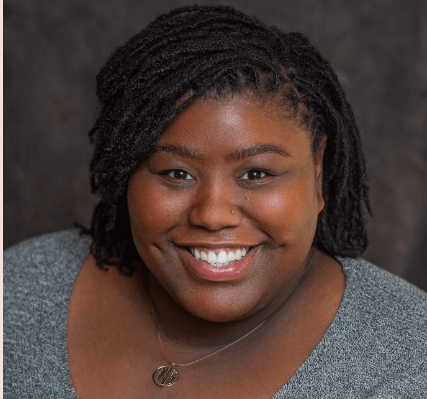
I’m E.A. Noble, and I write Queer and Diverse Fantasy for the Culture. I grew up in Mississippi with my great-grandmother, who encouraged me to turn my dreams into reality. Becoming a writer was always what I wanted to do. As a Queer, fat, Black, AuDHD, and disabled woman, it was important to me to write stories that amplify voices like mine. I want it to be normalized that we can be the love interests, the warriors, the assassins, the main leads, and the superheroes too!
Connect: @eanoble or @authoreanoble on all social media platforms.
Linktree: linktr.ee/eanoble
What drew you to superhero fiction and where did the idea come from for Super-Sized Bubble Gum?
I ALWAYS loved Superheroes! From Xena the Warrior Princess to the X-men. Growing up, I consumed Marvel and DC stories and never missed an episode of Smallville. Now that I am an author, it wasn’t so farfetched to dive headfirst in this genre, especially with shows like The Boys and Invincible, where the “Superheroes” act badly. BUT here’s the thing: what inspired me to write Supersized Bubble was one single thought. “Why is it that every Superhero could bench press 50-ton trucks, prevent full buildings from collapsing, and stop passenger-filled trains from nosediving into epic danger, but none of them can lift a single plus size woman?” Thus, Supersized Bubblegum was born.
What is your favourite character dynamic to write, and which characters / which book of yours do they feature in?
There are so many character dynamics that I love to write, and it’s hard to narrow them down to just one. First and foremost, I prioritize women in fantasy, so most of my work is women-led. More specifically, it’s led by Black women. I mention this because the dynamic I am about to name is a very sticky subject: the “Strong Black Woman.” Movies, TV, and books have trashed this character type so badly that the “Strong Black Woman” trope should be utterly flushed down the toilet and never heard from again.
Black women are not a monolith, and often, especially in fantasy, we are seen as the ones who uplift the main character, the sages of wisdom, the ones who can carry the burdens of the lead, and the fixers of everyone’s problems. People forget that Black women are human. We suffer, feel pain, hurt, cry, and break down just like everyone else. We want to be held, loved, fussed over, and we want someone to carry our burdens too. Yes, we are the strong friends, but strong friends need someone to check in on them as well.
Most of my characters are strong Black women, whether emotionally, physically, mentally, or spiritually. But I make sure that our humanity is written into the pages. I aim for readers to see not only our peaks but our valleys. I hope that when a reader opens my book, they identify with my characters’ humanity. Yes, they are strong, but they are no different than you.
So far, my readers absolutely love the journey my characters go through, whether it’s in Supersized Bubblegum, which is about fat women gaining superpowers by eating bubble gum while looking for their missing friend, or in When Blood Meets Earth, about a princess on the precipice of her bad girl era.
What can readers expect from your latest release, Super-Sized Bubble Gum (Aug 2024) and will they find themes that they recognise from your previous books?
Expect plus-size women being loved, respected, and embracing their power and womanhood. Be prepared for adventure, disappointment, and the discovery of self, friends, and what it really means to have a supportive and faithful family. Get ready for not only the tortured soul male character but also the cinnamon roll boyfriend and the slightly unhinged, possibly sociopathic girlfriend that you will love. Some recurring themes in my books are the found family trope and the power of friendship. (I can’t help it, that’s the anime girl in me.)
What tropes and elements of superhero fiction do you work with in SSBG, and how do you use/subvert/feature them?
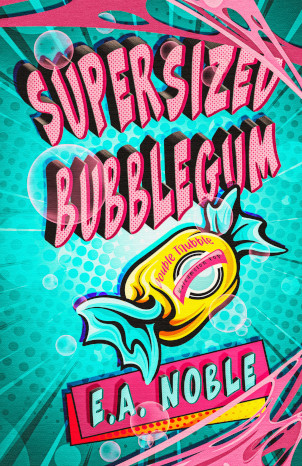
With this question, I low-key didn’t want to answer because I thought it might spoil some of the fun in SSBG. So, if you’re a reader and haven’t read SSBG yet, please stop here, go read it, then come back! For everyone else, carry on.
The superhero elements in SSBG aren’t very unique. I wasn’t trying to reinvent the wheel, but rather expand it to include more diverse bodies. One of my favorite superhero elements is the Speed Force. I absolutely love a speedster, so it was a no-brainer that one of my Fatty Baddies had to be one.
What I did differently was allow their powers to mimic who the ladies were already deep down. The bubble gum just helped to bring their magic out.
One of the ladies has a bubble gum power that coats her entire body as an added layer of protection. This layer of protection flares when she’s upset, becoming hard and stiff like candy-coated apples, but when she’s happy, it becomes soft and fluffy like cotton candy. She can touch her friends and give them a literal dopamine boost, like a sugar rush of love and happiness. As a defensive power, not only can it harden to stop literal bullets from harming her, but she can also use it offensively to bubble her opponents, causing them to stick in place. There are cyborgs in SSBG, and she used her power to jam their gears. When you read the story, her power totally makes sense based on her core personality. Each Fatty Baddy’s power reflects their deeper selves, so it isn’t just some random power. But I don’t want to spoil any more for the reader because the other ladies also have some really cool powers to display.
If you are a reader and have read SSBG, please tell me which one was your favorite!
Does/How does the intersection of Blackness and queerness of your work interact and speak to the themes of transformation and community/sisterhood/found family?
I always tell people that one of my goals is to normalize diversity to the point where being Black, queer, fat, disabled, or anything else is just what it is—nothing more, nothing less. We exist, and we can be heroes too!
One of my favorite stories is “Cinderella” with Brandy and Whitney Houston (R.I.P.). No one questioned why her stepsisters were Black and white with a white mother. No one questioned why the King and Queen were Black and white with an Asian son. People were just happy to see beautiful people on screen, dancing, singing, and being magical! That’s what I want: people to simply exist and be seen, heard, loved, and experienced without question and judgment.
When people pick up my books, I want them to see an amazing book that they can enjoy and get sucked into! We all have unique experiences in life, and we open these books to live in another person’s body for 200-550-plus pages, just for a little while, to get a break from living in ours.
When it’s time to close an E.A. Noble book and the story ends, I want my readers to learn a little bit more about themselves and the world around them. Stories have bound, molded, and shaped minds since the beginning of time. There are people trying to ban books because those books have power, and when they speak, people listen! Many see this as a threat because they want to control your mind, and books set so many people free.
Freedom, in America as a queer, Black, fat, AuDHD, disabled woman, seems to be threatened with every bill presented. The right book in the right hands can topple governments, transform communities, and liberate nations. Just as the wrong book in the wrong hands can displace millions, destroy entire cities and states, and be used as a weapon of control. This is why it is important to read stories with queer, Black, BIPOC, disabled, trans, and other diverse main leads. By doing so, you gain more empathy and a better understanding of yourself and the people around you. And the wild thing is, people say, “Well, I read to escape.” And yet they can read about a white woman toppling a government in “The Hunger Games” and be just fine with the escape. But paint her Black and suddenly it’s “I can’t relate. Why is it political?” Reading has always and forever will be political. But I digress. Read. Read more. Read well. Read diversely. By doing so, we discover that we are more alike than we are different, and at the end of the day, we are all in this together.
What are the challenges (and joys) of being a multi-genre author, and how do you manage them?
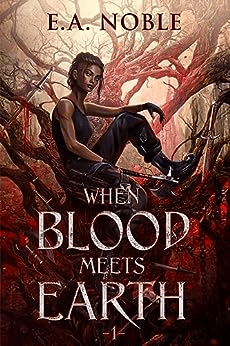
I just see it as one of the joys of being an indie author. When I first decided to take my writing seriously, I wanted to go the traditional route. However, after doing my research, I realized that traditional publishing might not be for me (at least not fully—maybe hybrid in the future).
One of the challenges most traditionally published authors face is being gridlocked into one genre. If you start with romance, then you are expected to stick with romance from here on out. If you want to write in a different genre, like murder mystery, you typically have to create new pen names. I can barely manage my personal Facebook account and my author Facebook account at the same time; there’s no way I could handle multiple personas just because I didn’t want to stay in one genre box.
These days, traditional authors have a bit more freedom to write in different genres as long as they are similar. For example, if you write romance, it’s easier to slip into historical romance, contemporary romance, or the increasingly popular romantasy. At the end of the day, I didn’t want to be put in a box. When readers meet me, I want them to know that while my primary genre is queer fantasy, I also write horror, mystery, action-adventure, urban fantasy, and superhero fantasy—really anything under the speculative fiction umbrella. I’ve decided to ditch the various personas and just say, “Hey, I am E.A. Noble, and this is the story I have for you today,” regardless of the genre.
I hope to introduce readers to new genres they didn’t know they liked because they are used to reading only one specific genre. For example, I had a reader tell me that she had never read a fantasy book before, but my story was her first. She said the only reason she read it was because she loved one of my horror stories and decided to pick up “When Blood Meets Earth” to see how it was. Now she’s obsessed and has added epic fantasy books to her to-be-read list. I just want to bring imagination back to adulthood.
The world can get far too mundane—let’s add a bit of magic and wonder to it!
Find Out MoreJuly 31, 2024
Author Spotlight: H.S. Kallinger
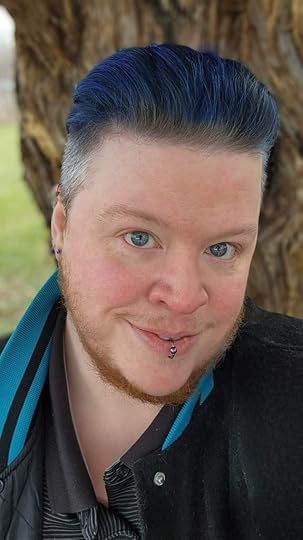
H.S. Kallinger (he/they) has been actively writing (on paper) since he was 13 and was first published in a teaching magazine in high school. His favorite subject tends to be vampires, but they love most of the fantasy and sci-fi genres. A scientist at heart, they enjoy looking for the ‘why’ behind everything. The unifying theme to their works is LGBTQIA+ characters, a subject they are passionate about. He majored in Criminal Justice with a minor in psychology and lives in Kansas with his husband, four children, and five kitties who fill them with love.
Author Links: https://linktr.ee/hskallinger
Ko-Fi: ko-fi.com/hskallinger
Photo by Elaine Bernadine Castro on Pexels.com
" data-medium-file="https://i0.wp.com/cmrosens.com/wp-con..." data-large-file="https://i0.wp.com/cmrosens.com/wp-con..." tabindex="0" role="button" src="https://i0.wp.com/cmrosens.com/wp-con..." alt="hand holding a slice of watermelon with blue swimming pool water in the background" class="wp-image-12969" style="width:705px;height:auto" srcset="https://i0.wp.com/cmrosens.com/wp-con... 1733w, https://i0.wp.com/cmrosens.com/wp-con... 300w, https://i0.wp.com/cmrosens.com/wp-con... 1024w, https://i0.wp.com/cmrosens.com/wp-con... 768w, https://i0.wp.com/cmrosens.com/wp-con... 1536w, https://i0.wp.com/cmrosens.com/wp-con... 1200w, https://i0.wp.com/cmrosens.com/wp-con... 800w, https://i0.wp.com/cmrosens.com/wp-con... 600w, https://i0.wp.com/cmrosens.com/wp-con... 400w, https://i0.wp.com/cmrosens.com/wp-con... 200w, https://i0.wp.com/cmrosens.com/wp-con... 624w, https://i0.wp.com/cmrosens.com/wp-con... 1650w" sizes="(max-width: 825px) 100vw, 825px" data-recalc-dims="1" />Photo by Elaine Bernadine Castro on Pexels.comOperation Olive Branch: https://linktr.ee/opolivebranch
GoFundMe’s Highlighted by Authors for Palestine Event: https://afp.ju.mp/#info
For the AfP event we have selected the following 3 families to help boost their fundraisers. The details below were taken from the OOB spreadsheet.
Mohammed’s fundraiser: GoFundMe
Mohammed’s Instagram: @mohammedalbaredei
Ibrahim’s fundraiser: GoFundMe
Ibrahim’s Instagram: @ibrahimwithi
Rula’s fundraiser: GoFundMe
Rula’s Instagram: @rula_mohammed
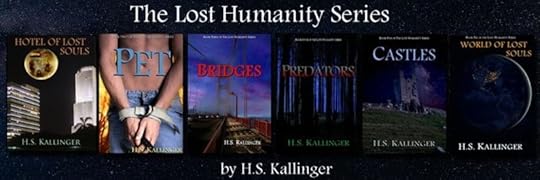
You were one of the authors involved with the Authors for Palestine event – can you tell us why you chose to get involved with this, and which of your works you put up as raffle prizes?
The situation with Palestine has been stressing me out since I started learning about the history of the area. I abhor suffering. However I can help alleviate some, I try to. I am vehemently opposed to the actions of the Israeli government. I put up my entire published works as raffle prizes.
Do you find your sense of social justice and activism informs the philosophy of your writing, in terms of narrative and character arcs? If so, how?
I write queer characters. I write neurodivergent and disabled characters. I write characters like me. That is an act of politics. All art is political, but especially writing. When it comes to science fiction and fantasy, politics is in the very roots of the genres and everything we do. My sense of social justice informs everything I write, from making certain I’m not only avoiding racism but am actively anti-racist to writing worlds where the activism makes a difference. There are likely all sorts of messages and meanings that I am oblivious to having woven into my stories. The whole ‘the curtains are blue’ thing–I just like blue. But it doesn’t mean that I’m not unconsciously inserting layers into the narrative that mean more than I was aware of during writing. And my current protagonist is a social justice advocate himself.
As for character arcs? They’re all about healing on both a micro and macro level. I’m a criminal justice major, so there are definitely themes of restorative justice. When I delve into near future writing, I include societal reforms that I want to see happen here. Well, except the post-cyperpunk dystopian universe, but cyberpunk has always been about critique.
Let’s talk about your work a bit more; you have 2 series that you’re developing, “Lost Humanity” and “Found Humanity”. What for you is the underscoring theme/s that follows through these series?
Both series are about ‘otherness,’ healing, finding community (and family), and finding who you’re meant to be (self-discovery). They’re also about love in all its forms. I suppose the big theme is that “People are monsters, and monsters are people,” and everyone chooses what that means for them, personally. With Lost Humanity, it’s about a human protagonist (initially), Zack, who becomes a villain’s lackey and more and more monstrous as he goes along. At the same time, he’s trying to balance that against its conflict with his internal sense of self. He doesn’t want to be evil, but he also feels he has no choice. At the same time, he’s aware that he is responsible for those choices. He’s a mess. With Found Humanity, my dhampir protagonist, Gabriel, wants to change the world for the better. He wants to be a hero. And as he progresses and becomes physically less human, he loses the monstrous aspects of himself as he heals.
How do you work with the interplay of queerness and monstrosity, in a world of queer characters and vampires, dhampirs, and so on?
Well, first, none of the monsters I write are metaphors. They’re literally what they’re supposed to be. So, being a vampire isn’t a metaphor for being queer or something, but I do believe that we’d treat vampires pretty much the same as queer people, and there’s a lot of similar experiences. Vampires ‘transition’ after they change/become/transform/are elevated–whichever term their culture uses (there’s no universal language happening here) as they mature both physically and mentally from a newly changed (the most common American terminology for the time period of these books) into a mature vampire who can return to human society. So, you can read metaphor into that, for sure, even though I approached it from a more scientific POV. Having new systems develop, new instincts, having to adapt, relearn, etc. It’s a lot like a fast-forward second childhood. So, a trans vampire could be said to be in ‘third puberty.’ Yikes.
My vampires aren’t monsters. They are a subspecies of human who undergo a kind of metamorphosis after being infected and become potentially-symbiotic super-predators. Like any people, they can be monsters, and it’s more likely that someone with superhuman abilities who see other people as food might become monsters, for sure, but in the end, it’s entirely their choice. I might enjoy the ‘all vampires are queer’ jokes, but I don’t agree in practice.
As for the actual monsters, the diversity of queerness remains the same as in our own population. The Lost Humanity world has no Gabriel Belmont to change the fact that there are only humans, vampires, and dhampir on Earth… or at least, as far as I know. It has the same chance as our own world to harbor ghosts and such. If they’re real here, they are there, but I can’t say for either universe. With Found Humanity, Gabby’s ability to break through into other universes changes the equation. He finds worlds where queerness was never othered. He finds masked worlds (which he hates). He learns magic and makes friends with a demon, werewolves, fairies, dragons, and more. Anyone who becomes more than friends with him (or her or xem–Gabby is genderfluid) is going to be some flavor of queer, most likely. Someone once mentioned that Hotel of Lost Souls blended the vampires in so naturally to our world that it wasn’t a story about vampires, but rather, a story about abuse and change that happened to have vampires in it.

Where do you see your take on vampires fitting into other literary traditions like Gothic Horror, Paranormal Fiction, etc that feature them, and why choose Sci-Fi as a vehicle for yours?
I chose sci-fi (though it’s properly sci-fantasy, there is enough hard science to fit both) because I love science. I first learned basic quantum physics theories (well, what we had in the late 1980s, anyway) at 9 years old when a college physics professor saw me reading OMNI magazine and struck up conversation with me at the dojo where my mom worked, and I spent most of my time when I wasn’t at school. We’d have conversations about science every week after that while he waited for black belt class to start. I don’t remember when or why they stopped. Science was always my favorite subject. Many of my favorite teachers were my science teachers. Especially the clearly neurodivergent weirdos, like me. I got into Star Trek at ten (my husband beat me by getting into it at age 4, lol), and while I’d watched some other sci-fi here and there, that’s what really hooked me. I don’t think I can write a modern world book that isn’t at least a little sci-fi.
There are definitely vampires in my world who’d fit in just fine in Gothic Horror. I prefer to deal with psychological and social issues precisely as they are, as opposed to metaphor. Call the duck a duck in part to remove stigma. And my first book in the Lost Humanity series was primarily psychological horror.
There are aspects of Paranormal Fiction in my works. Some of the things that control the rules for vampires can’t be explained neatly by science. For example: the threshold. There are theories that it’s a psychological block, but those are defeated by what happens when you move an unconscious vampire inside on without an invitation. What happens to them is almost entirely in their mind, except that they can end up having seizures and burn through their blood supply. It can’t kill them, but they’ll wish they were dead in seconds. Another is their ability to move at impossible speeds. If they’re carrying someone, the rider isn’t really jostled any more than being carried by anyone else. They don’t create the levels of friction they should. However, there may be elements of some kind of ‘bubble’ protecting them from standard physics that forms… which doesn’t explain the bubble itself, either. The science is as incomplete there as it is here. It might be discovered later, or it might not. And gifted vampires can have gifts that are very difficult to explain by science. There are certainly theoretical sciences that can explain many of them but not necessarily all of them. And that’s why it’s sci-fantasy.
What are your publishing plans for “Lost” and “Found” – what should we be looking out for?
Well, the Lost Humanity series is over and done, except for a collection of short stories. You can purchase all six books at multiple retailers. More of the short stories will be published on my blog to read for free, but I’m currently finishing up a novella that will be the final piece of the Lost Stories compilation (that is, short stories from that series) that will only be available in the published book. I’m hoping to finish it and put it out this year, but I can’t say for certain.
The best places to watch for release dates are on my Patreon, Facebook (H.S. Kallinger), Threads, or Bluesky.
The Found Humanity series will be a rapid release of over twenty books when it’s finished. They’re a lot shorter than the Lost Humanity books (which were mostly epic-length), which better fits the less plot-driven nature that rejects the standard western story format. The first few books are in the polishing stage, but the last hasn’t been written yet, so I can’t say when, exactly, they’ll be ready to be released. Hopefully, when that day comes, I’ll be putting out a new book every couple months for a few years.
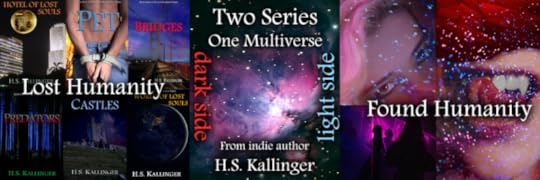 Like This? Try These:
Like This? Try These:Josiah Akhtab – vampire fiction



